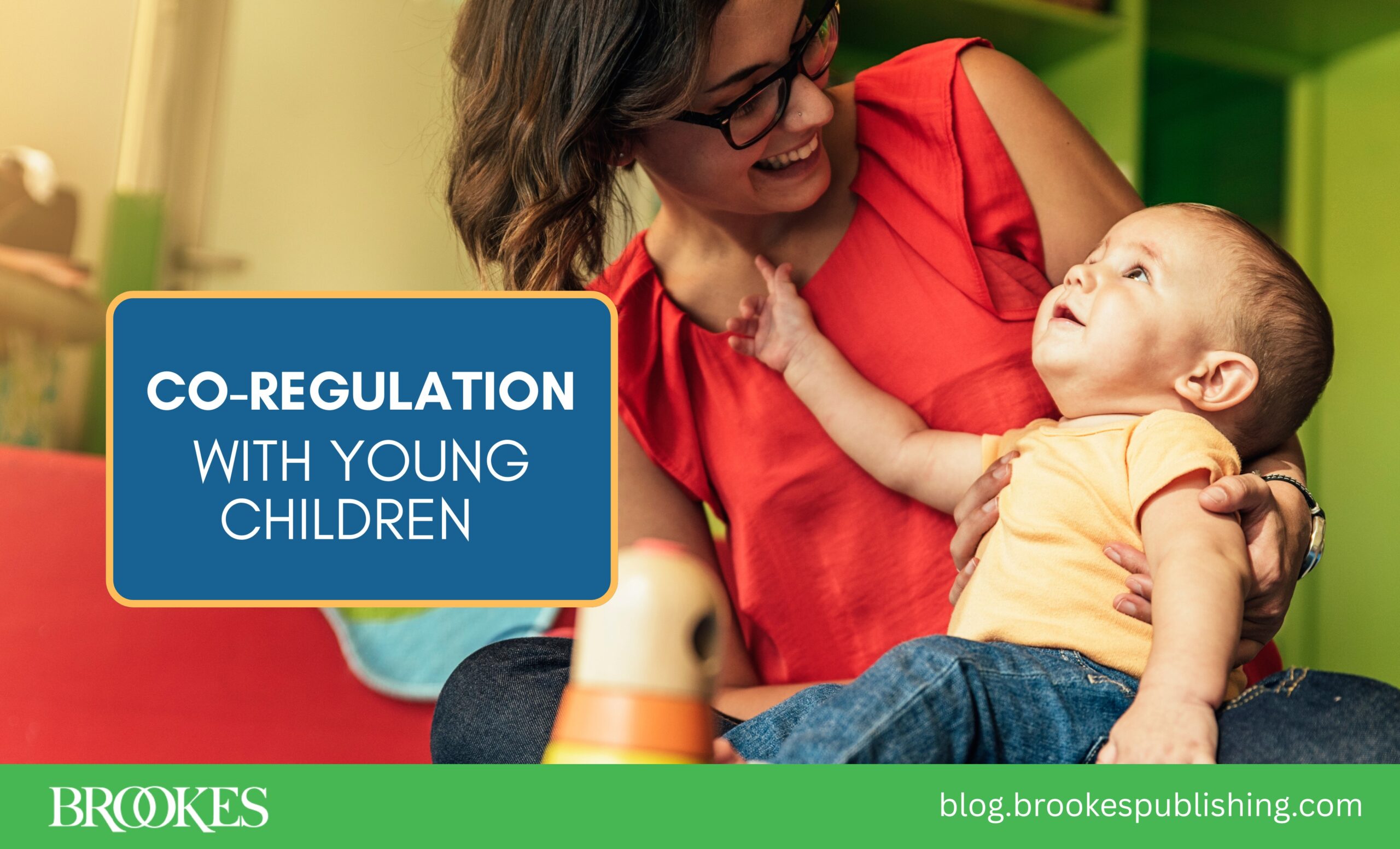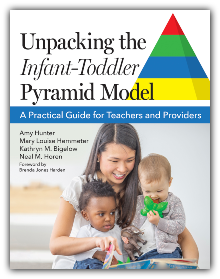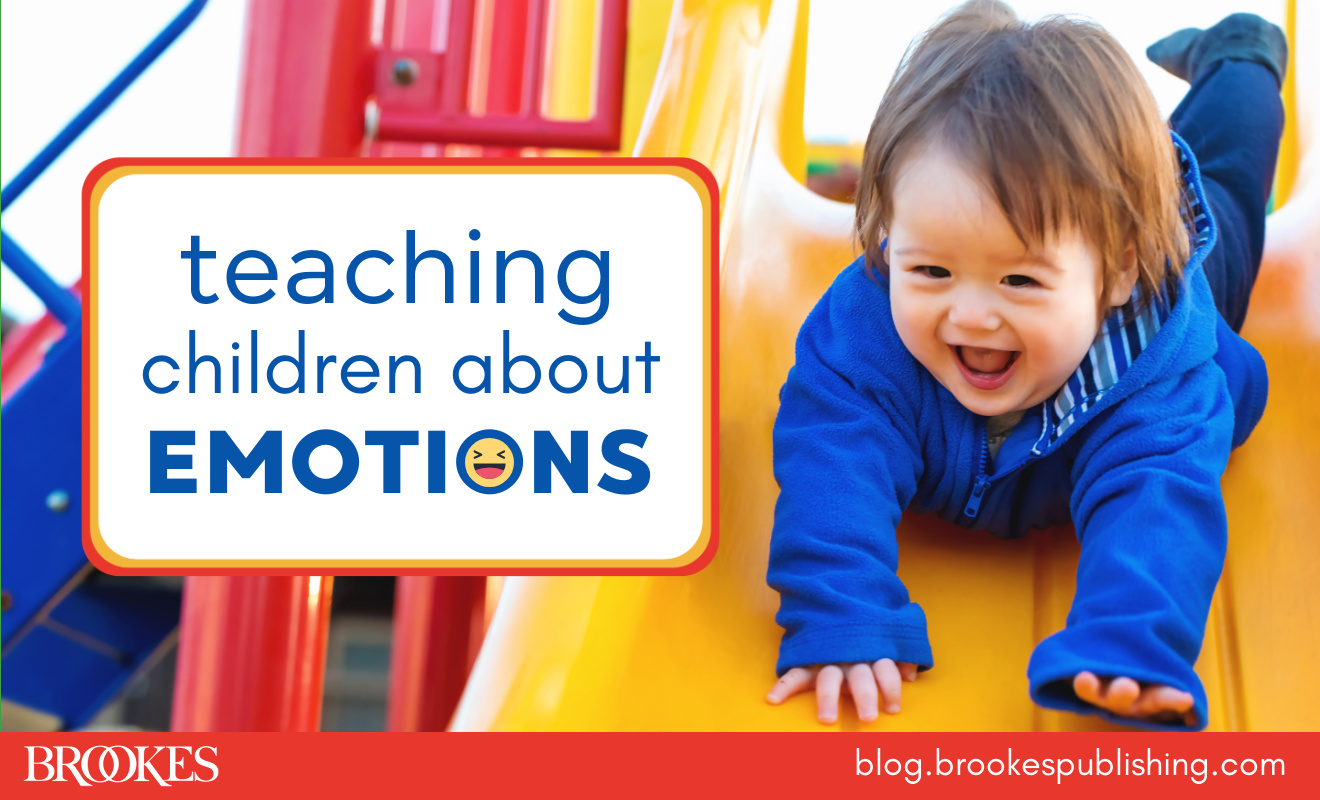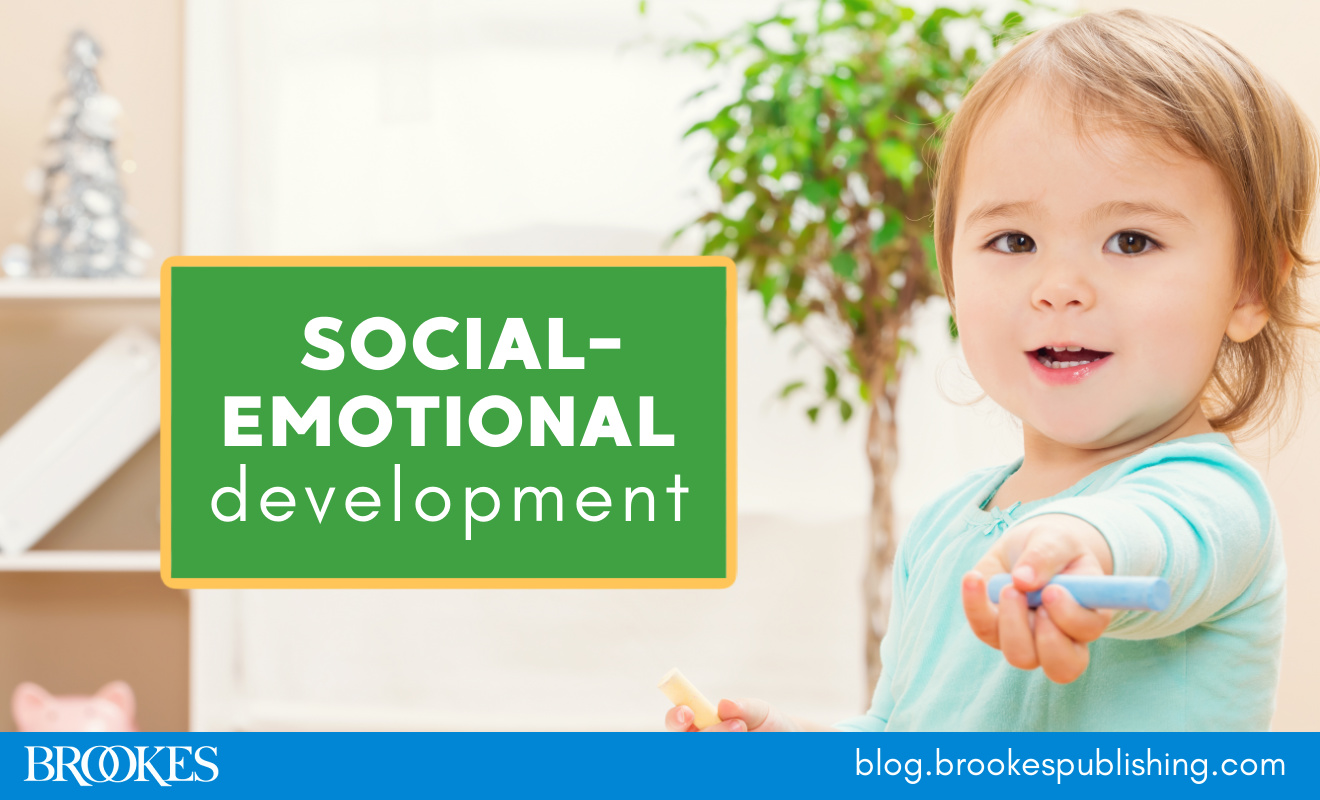19 Co-Regulation Tips for Addressing Young Children’s Behavior
August 6, 2025
 This article on young children’s behavior has been adapted from the book Unpacking the Infant–Toddler Pyramid Model, by Amy Hunter, Mary Louise Hemmeter, Kathryn M. Bigelow, & Neal M. Horen.
This article on young children’s behavior has been adapted from the book Unpacking the Infant–Toddler Pyramid Model, by Amy Hunter, Mary Louise Hemmeter, Kathryn M. Bigelow, & Neal M. Horen.
Picture this: Jasmine and Antonia are co-teachers in an infant-toddler classroom of 10 children ranging from 4 months to 18 months of age. They have been working with a Pyramid Model coach for a year and have been successfully implementing several universal practices for behavior, including providing frequent positive attention, using clear transition warnings, and having a predictable schedule and routines. But both teachers have noticed that the children in their class this year are not responding to their use of practices as quickly as last year’s class did.
What should they do?
Infants and toddlers rely heavily on communicating through nonverbal behaviors. As they grow, they learn new ways of communicating their needs. It’s the adults’ job to consider what children are communicating and help them learn positive ways to get their needs met.
One way teachers can respond when challenging behavior occurs in infant and toddler classrooms is through co-regulation. It works like this: When caregivers meet young children’s needs and help to soothe and support them and their feelings, young children learn that their needs are important, and they learn how to eventually meet their own needs and soothe themselves.
Adult Self-Regulation Comes First!
 To help children regulate their emotions, adults need to develop their own self-regulation skills. If you weren’t taught how to notice and regulate emotions as a child, it’s never too late to start!
To help children regulate their emotions, adults need to develop their own self-regulation skills. If you weren’t taught how to notice and regulate emotions as a child, it’s never too late to start!
Taking time to become aware of the culture, life experiences, and beliefs that shape individual responses to stress is a great first step. Ask yourself these questions to begin to understand your emotions and responses to stress:
- How were emotions and communication addressed in my family growing up versus now?
- How was I taught to respond to big feelings? How is that the same or different from how I would like to respond today?
- What are my challenging behavior “hot buttons,” or child behaviors that “push my buttons”? Have I shared them with my co-teacher? Have they shared their hot buttons with me?
- How am I feeling in this moment?
- What helps me to calm down both during work and outside of work?
- When and where can I use these strategies that help me calm down?
Co-Regulation Support for Infants and Toddlers
 Once you have strategies to calm yourself, you can offer support to infants and toddlers as they develop regulation skills. Pay attention to children’s cues when they are both regulated or experiencing a big emotion to begin to learn what works best.
Once you have strategies to calm yourself, you can offer support to infants and toddlers as they develop regulation skills. Pay attention to children’s cues when they are both regulated or experiencing a big emotion to begin to learn what works best.
Here are 19 good examples of co-regulation techniques to use with newborns, infants, and toddlers.

- Side or stomach position: Hold baby on their side or over your shoulder on their stomach side while making sure to support their head. This is a naturally regulating position for many babies.
- Shush: Sounds and white noise calm crying and increase sleep. These noises simulate the loud sound of blood flow babies hear in the womb.
- Swing: Hold baby’s neck and head and, with small movements, move baby back and forth about an inch on either side. Some babies also like when you cradle them and use your knees to push your body up and down. Find a movement that works best for each baby, but be mindful to not shake too hard. Babies are used to their mother’s movements throughout the day.
- Sucking on a bottle or pacifier helps babies to calm. Try to feed babies when they are awake, but if they want to suck to sleep, use a pacifier so they begin to become aware of their physical states. Sucking is the first self-regulation strategies babies learn to do on their own. At 2.5–3 months, babies begin bringing their hand to their mouth. After 4 months, babies can begin to bring their hand to their mouth on their own and use this strategy to calm themselves.
Source: Karp, H. (2015).*
 All babies are unique. Try different soothing strategies to see what they respond to best. Ask families about the soothing strategies that work best at home and do your best to stay consistent.
All babies are unique. Try different soothing strategies to see what they respond to best. Ask families about the soothing strategies that work best at home and do your best to stay consistent.
- Put baby down to sleep when drowsy but not asleep. It can be alarming if they wake up in a new place. Look for sleep cues such as rubbing eyes or yawning and begin the sleep routine.
- Keep lights low during sleep times. It helps babies begin to learn the difference between night and day, sleep and awake.
- Try rubbing baby’s back or tummy and shushing first, before picking them up, to see if they calm down if the crying isn’t a result of hunger or need for a diaper change. If not, pick them up and use rocking, shushing, or sucking strategies.
- Respond in a timely manner when baby starts crying.
- Be consistent and create a predictable soothing routine for each baby. Adapt strategies for babies as they change and grow (e.g., you might start to prompt baby to bring their hand to their mouth to start sucking themselves).
- Give babies something new to see. As babies begin to spend more time awake, help them begin to engage with their environment. A baby could simply be telling you, “I want to see something new.” Walk to a window or a peer and talk about what you see.

- Use a calm tone.
- Provide choices. Use a visual choice board with toddlers when they are calm to ask them what helps them to calm down when they feel upset.
- Ask a toddler if they want to be held or picked up when upset. Just like babies, some toddlers need physical touch to calm (e.g., “Was that a scary noise? I’m sorry. Can I pick you up to help you feel better?”).
- Label emotions throughout the day, and include a variety: happy, sad, surprised, excited, scared, frustrated, mad.
- Empathize and validate emotions: “Did Kara hit you? I’m sorry; that must have hurt. It looks like you are upset.”
- Teach self-calming strategies, such as taking deep breaths or using words or gestures to ask for what they want.
- Show toddlers what you do to calm down: “When I feel upset, I take a deep breath like this.”
- Provide attention and affirmation when a toddler uses a regulation skill on their own: “You used your words to tell me you wanted a hug! Of course, I will give you a hug to help you feel better.”
- Direct their attention to something new. Offer a distraction to see if they need a new focus to forget about why they are upset.
Infants and toddlers need support from nurturing and responsive adults to feel cared for and understood. Through co-regulation, you can give them that essential support and help address the communicative behaviors that adults find challenging.
*Source: Karp, H. (2015). The happiest baby on the block: Fully revised and updated second edition: The new way to calm crying and help your newborn baby sleep longer. Bantam.




Write a Comment
Your email address will not be published. Required fields are marked *
Post a Comment